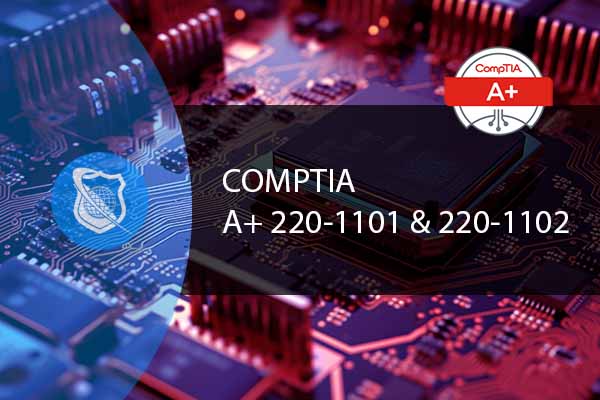The art of creating and maintaining IT documentation holds the key to unlocking efficiency and ensuring success in IT operations. This guide will explore the critical role of documentation in the tech realm and how it can make a substantial impact on your professional journey.
Why Technical Documentation Matters
In the complex landscape of IT, technical documentation serves as the cornerstone for effective management and seamless problem-solving. It encompasses various facets, from hardware and software inventory to network topology diagrams, incident response procedures, and adherence to IT policies and guidelines. Let’s delve into the core segments related to this crucial aspect of IT.
Inventory Management and Asset Tracking
At the heart of any robust documentation system lies inventory management. It entails meticulously recording all hardware and software assets within your organization. To facilitate this process, many IT professionals opt for specialized asset management software, alongside RFID tags and barcodes that simplify asset tracking. This approach ensures that you always know the ‘who,’ ‘what,’ and ‘when’ of your technology resources.
To create comprehensive documentation in this area, consider including the following key items:
- Asset Identification: Clearly label and identify each hardware and software asset. Use unique asset tags or labels for easy recognition.
- Asset Description: Provide detailed descriptions of each asset, including its make, model, serial number, and specifications. This information helps in quick identification and troubleshooting.
- Ownership Information: Document the department or individual responsible for each asset. This ensures accountability and facilitates communication when issues arise.
- Location Tracking: Record the physical location of each asset within your organization. This information is vital for maintenance, upgrades, and asset retrieval.
- Purchase Information: Include details of the purchase date, vendor, and cost of each asset. This data assists in budgeting and financial planning.
- Warranty and Maintenance Information: Note the warranty status and maintenance schedules for hardware assets. This helps in timely repairs and replacements.
- Software Licensing: Keep track of software licenses, including the type of license, expiration dates, and the number of licenses purchased. Ensure compliance with software licensing agreements.
- Usage History: Maintain a log of the asset’s usage history, including any repairs, upgrades, or modifications made over time. This information can help predict when an asset may require replacement.
- Depreciation Schedule: Calculate and document the depreciation schedule for hardware assets. This aids in financial reporting and asset lifecycle management.
- Asset Disposal: Outline the process for retiring or disposing of assets that are no longer in use. Ensure compliance with disposal regulations and data security measures.
- Inventory Audits: Conduct regular inventory audits to verify the accuracy of the documented information. Update records as needed to reflect the current state of assets.
- Access Controls: Document who has access to specific assets or asset records. This helps in ensuring data security and preventing unauthorized access.
- Asset Tracking Tools: Mention the tools or software used for asset tracking and management, including any barcode scanners, RFID systems, or asset management software.
- Backup and Recovery Plans: Include information on backup and recovery plans for critical data associated with assets. Ensure that data loss risks are minimized.
- Data Security Measures: Describe the security measures in place to protect asset-related data, such as encryption, access controls, and regular security assessments.
- Reporting and Documentation Templates: Provide templates for creating standardized asset reports and documentation. This ensures consistency in documenting new assets and updates.
- Training Resources: Offer resources or guidelines for training staff on proper asset management practices, including data entry and record keeping.
- Asset Retirement Policy: Clearly outline the steps and criteria for retiring or decommissioning assets, including data erasure and disposal procedures.
By including these key items in your inventory management and asset tracking documentation, you can establish a robust system that not only helps in efficient asset management but also ensures compliance, accountability, and data security within your organization.

Information Security Manager Career Path
Propel your career forward and be part of an essential member of any management team as an Information Security Manager. This advanced training series is designed specifically for those want to move up into a management position in the IT field.
Network Topology and Infrastructure Documentation
Understanding the physical and logical layout of your network is paramount. Comprehensive network topology diagrams provide an invaluable visual representation of your IT landscape. These diagrams pinpoint the locations of essential components such as routers, firewalls, and connectivity points. Having this information readily available can significantly expedite troubleshooting and network optimization efforts.
To ensure you capture all the critical details, consider including the following items in your documentation:
- Physical Network Diagram: Create a visual representation of your physical network layout, including the placement of routers, switches, servers, and other hardware components. Use symbols and labels to clearly identify each device and its connections.
- Logical Network Diagram: Develop a logical network diagram that illustrates the relationships between network segments, subnets, VLANs, and other logical components. This diagram should complement the physical diagram and help in troubleshooting and planning.
- IP Addressing Scheme: Document the IP address allocation scheme, including subnets, IP ranges, and the purpose of each subnet. Specify whether IP addresses are assigned statically or dynamically (e.g., DHCP).
- Network Device Configuration: Provide detailed configurations for critical network devices, such as routers, switches, firewalls, and access points. Include settings like IP addresses, VLAN configurations, routing protocols, and security policies.
- Network Device Inventory: Maintain an inventory of all network devices, including their make, model, serial numbers, firmware versions, and physical locations. This inventory simplifies hardware management and replacement planning.
- Port Mapping: Document the connectivity of devices to specific ports on switches and routers. This information helps pinpoint device locations and simplifies troubleshooting.
- Cable Management: Keep track of cable connections, including cable types, lengths, and labeling. Proper cable management reduces cable-related issues and simplifies future changes.
- Security Measures: Describe the security measures in place, such as firewall rules, access control lists (ACLs), and intrusion detection systems. Ensure that network security policies and procedures are well-documented.
- VPN Configurations: If your organization uses virtual private networks (VPNs), document VPN configurations, encryption protocols, and remote access policies. Ensure the security and reliability of remote connections.
- Load Balancing and Redundancy: Outline load balancing configurations and redundancy strategies for critical network services and devices. Document failover mechanisms and recovery procedures.
- Network Monitoring Tools: List the network monitoring tools and software in use, including their configurations and alerting thresholds. Ensure that the IT team is aware of how to use these tools effectively.
- Network Traffic Analysis: Keep historical records of network traffic patterns and performance metrics. This data aids in troubleshooting and capacity planning.
- Change Management Procedures: Document change management processes for network configuration changes, including approvals, testing, and back-out plans. Ensure compliance with change control policies.
- Disaster Recovery and Backup: Detail disaster recovery and backup strategies for network infrastructure. Include information on data backup schedules, off-site storage, and recovery procedures.
- Vendor Contacts: Maintain a list of vendor contacts and support agreements for network hardware and software. This information is valuable for obtaining technical assistance and warranty support.
- Network Documentation Templates: Provide standardized templates for creating new network documentation, ensuring consistency across different projects and updates.
- Training Resources: Offer resources or guidelines for training staff on network documentation practices and procedures, emphasizing the importance of accurate and up-to-date records.
- Network Policies and Procedures: Reference network policies and procedures documents that cover areas such as acceptable use, data handling, and security protocols. Ensure that these documents are readily accessible.
By incorporating these items into your network topology and infrastructure documentation, you can establish a comprehensive reference guide that facilitates efficient management, troubleshooting, and planning for your organization’s IT network.

CompTIA A+ Course
Embark on a transformative journey into the world of IT with our CompTIA A+ Certification course. From mastering hardware and network devices to software troubleshooting and security procedures, this comprehensive course equips you with the skills to excel in the ever-evolving tech landscape. Take the next step in your career and prepare for the CompTIA A+ exams!
Incident Response: Procedures and Documentation
In the fast-paced world of IT, incidents are inevitable. Effective incident response procedures, documented meticulously, are essential for navigating these challenges. Incident management documentation should encompass a wide array of scenarios, from minor glitches to critical system failures. A well-structured incident management plan ensures that your IT team can respond swiftly and efficiently to any situation, minimizing downtime and potential damages.
To ensure that your incident response plan is comprehensive, consider including the following key items:
- Incident Classification: Define different incident categories based on severity, impact, and type, such as security breaches, data breaches, system outages, and malware infections. Assign clear classifications to each incident to prioritize responses.
- Incident Reporting Procedures: Document how employees should report incidents, including whom to contact, communication channels to use, and any required incident reporting forms. Ensure that incident reporting is easy and accessible.
- Incident Response Team: Specify the roles and responsibilities of the incident response team members, including incident coordinators, investigators, communicators, and technical experts. Identify backup team members as well.
- Contact Information: Maintain a list of contact information for all incident response team members, including their phone numbers, email addresses, and available hours. Include emergency contact details for after-hours incidents.
- Incident Escalation: Outline procedures for escalating incidents to higher levels of management or external organizations (e.g., law enforcement, third-party vendors) when necessary. Define criteria for escalation.
- Incident Detection and Identification: Describe how incidents are detected and identified within the organization. Include details about monitoring systems, intrusion detection tools, and user-reported incidents.
- Incident Triage: Explain the initial assessment process when an incident is reported. Define criteria for determining the severity and potential impact of the incident.
- Incident Containment: Document steps for containing the incident to prevent further damage or compromise. Specify isolation procedures, data backup processes, and system shutdowns if required.
- Evidence Preservation: Detail procedures for preserving digital evidence related to the incident. Ensure that forensic best practices are followed to maintain the integrity of evidence.
- Incident Investigation: Describe how incident investigations are conducted, including who conducts them and the tools and techniques used. Document procedures for collecting and analyzing evidence.
- Communication Plan: Establish a communication plan that includes internal and external stakeholders. Define what information should be communicated, who should communicate it, and how often updates should be provided.
- Legal and Compliance Considerations: Address legal and regulatory requirements related to incident reporting and response. Ensure that your procedures align with applicable laws and industry regulations.
- Public Relations and Media Response: Specify how to handle public relations and media inquiries in the event of a high-profile incident. Designate a spokesperson and provide guidance on messaging.
- Notification Requirements: Document any legal or regulatory requirements for notifying affected individuals, customers, or authorities in the event of a data breach or privacy incident.
- Restoration and Recovery: Outline the steps and procedures for restoring affected systems and services to normal operation. Include timelines and testing procedures to ensure full recovery.
- Post-Incident Review: Document the process for conducting a post-incident review or “lessons learned” analysis. Identify areas for improvement and update incident response procedures accordingly.
- Documentation Templates: Provide templates for incident reports, timelines, and logs. Standardize the documentation process to ensure consistency and thoroughness.
- Training and Awareness: Include information on training programs and awareness campaigns to educate employees about incident response procedures. Promote a culture of cybersecurity awareness.
- Testing and Drills: Specify how and when incident response plans are tested through tabletop exercises or simulated incident drills. Schedule regular testing to evaluate the effectiveness of your procedures.
- Documentation Storage and Access: Ensure that incident documentation is stored securely and is easily accessible to authorized team members and auditors when needed.
By including these key items in your incident response procedures and documentation, your organization can better prepare for and respond to cybersecurity incidents and other emergencies, minimizing potential damage and ensuring a swift and coordinated response.
IT Policies and Guidelines
The backbone of any IT operation lies in its policies and guidelines. These documents establish a framework for decision-making, standardize processes, and maintain a cohesive IT environment. Among the most critical IT policies are those pertaining to password management and acceptable usage. Such guidelines should be consistently adhered to, ensuring the security and integrity of your IT infrastructure.
Below are key items to include in your IT policies and guidelines documentation:
- Acceptable Use Policy (AUP):
- Specify acceptable and prohibited uses of IT resources, including internet and email usage.
- Address compliance with laws and regulations, copyright, and intellectual property.
- Define consequences for policy violations.
- Data Security Policy:
- Outline measures to safeguard sensitive data, such as personal information, financial records, and intellectual property.
- Include data classification, encryption, and access control guidelines.
- Describe data breach notification procedures.
- Password Management Policy:
- Define password complexity requirements, expiration periods, and account lockout policies.
- Promote the use of strong, unique passwords for user accounts.
- Specify password storage and retrieval procedures.
- Network Security Policy:
- Detail firewall rules, intrusion detection systems, and security configurations.
- Address network segmentation, VPN usage, and remote access security.
- Establish guidelines for wireless network security.
- Mobile Device Management Policy:
- Address the use of mobile devices (smartphones, tablets, laptops) for work purposes.
- Specify device encryption, remote wipe capabilities, and app installations.
- Define procedures for lost or stolen devices.
- Software Usage and Licensing Policy:
- Describe guidelines for installing, updating, and removing software applications.
- Ensure compliance with software licensing agreements.
- Address open-source software usage and restrictions.
- Email and Communication Policy:
- Specify email usage rules, including confidentiality and professional communication guidelines.
- Address email retention and archiving policies.
- Describe procedures for reporting phishing and suspicious emails.
- Incident Response and Reporting Policy:
- Outline procedures for reporting and responding to cybersecurity incidents.
- Define incident classification, escalation, and communication processes.
- Address incident documentation and post-incident review.
- Backup and Data Recovery Policy:
- Describe backup schedules, data retention periods, and storage locations.
- Specify data recovery procedures in case of data loss or disasters.
- Address testing and verification of backups.
- Remote Work and Telecommuting Policy:
- Define remote work expectations, including security measures for remote access.
- Specify equipment and software requirements for remote employees.
- Address data security and confidentiality during remote work.
- Asset Management and Disposal Policy:
- Document procedures for tracking and managing IT assets (hardware and software).
- Specify asset tagging, inventory audits, and retirement processes.
- Address data sanitization and disposal of retired assets.
- Training and Awareness Policy:
- Define requirements for cybersecurity training and awareness programs for employees.
- Promote a culture of cybersecurity awareness and continuous learning.
- Specify training frequency and content.
- Vendor and Third-Party Risk Management Policy:
- Address due diligence processes for evaluating and monitoring third-party vendors.
- Specify contractual requirements related to cybersecurity and data protection.
- Define procedures for responding to vendor security incidents.
- Social Media and Online Presence Policy:
- Specify guidelines for employees’ use of social media for business purposes.
- Address brand representation, confidentiality, and professionalism.
- Outline procedures for responding to online reputation issues.
- Compliance and Regulatory Policy:
- Ensure alignment with industry-specific regulations and compliance requirements.
- Specify auditing and reporting procedures for regulatory compliance.
- Address consequences for non-compliance.
- Document Retention and Destruction Policy:
- Define document retention periods and procedures.
- Specify secure destruction methods for physical and electronic documents.
- Address legal and regulatory requirements for document retention.
- Change Management Policy:
- Document procedures for requesting, testing, and implementing changes to IT systems.
- Specify change approval processes and communication requirements.
- Address rollback procedures in case of failed changes.
- Reporting and Accountability:
- Designate roles and responsibilities for enforcing IT policies.
- Specify the reporting structure for policy violations and incidents.
- Define consequences for non-compliance, which may include disciplinary actions.
- Review and Revision Process:
- Establish a process for regularly reviewing and updating IT policies and guidelines.
- Specify who is responsible for policy revisions and approvals.
- Appendices and References:
- Include any additional documents, templates, or external references that support IT policies and guidelines.
- Provide links to relevant laws, regulations, and industry standards.
By including these key items in your IT policies and guidelines documentation, you can create a comprehensive framework that promotes security, compliance, and responsible technology usage within your organization.

IT Project Manager Career Path
Learn to effective manage IT related projects in this IT Project Manager Career Path Training series. Learn the concepts of Agile and Scum project management and embark on a journey toward higher level Project Management Roles with the included CAPM course.
Ticketing Systems in IT Support
For IT support professionals, ticketing systems are indispensable tools. While it’s not necessary to master every ticketing system, understanding the basics is a must. These systems streamline incident reporting, providing a structured approach to issue resolution. Key elements include capturing user information, device details, problem descriptions, and categorizing tickets based on severity and urgency.
Effective Communication and Documentation
In IT, clear and concise written communication is the linchpin of efficient operations. When documenting issues, solutions, or incident reports, it’s crucial to avoid using overly technical jargon that could bewilder non-technical users. Instead, opt for a communication style that ensures clarity and comprehension across all stakeholders.
Here are some tips to enhance your communication and documentation practices in IT:
1. Know Your Audience:
- Tailor your communication and documentation to the specific audience, whether it’s technical experts, non-technical staff, or executives. Use appropriate language and level of detail.
2. Clear and Concise Language:
- Use clear, concise, and jargon-free language. Avoid technical terms and acronyms unless your audience is familiar with them.
3. Use Visuals:
- Incorporate visuals such as diagrams, charts, and graphs when explaining complex concepts or network topologies. Visual aids can enhance understanding.
4. Standardize Documentation:
- Establish standardized formats and templates for documentation. Consistency in structure and organization makes it easier for users to navigate and find information.
5. Version Control:
- Implement version control for documents to track changes and updates. This ensures that everyone is working with the latest information.
6. Document as You Go:
- Record changes, configurations, and procedures as you perform them. Don’t rely on memory, as details may be forgotten over time.
7. Use Document Management Systems:
- Employ document management systems or collaboration tools to centralize and organize documentation. This facilitates access and sharing among team members.
8. Include Context:
- Provide context when documenting procedures or configurations. Explain the “why” behind decisions and actions, not just the “how.”
9. Update Regularly:
- Keep documentation up to date. Review and revise documents whenever there are changes in technology, configurations, or procedures.
10. Version History: – Maintain a version history or changelog for documents to track revisions and understand the evolution of configurations or procedures.
11. Backup Documentation: – Create backups or copies of critical documentation and store them securely. Ensure redundancy to prevent loss of important information.
12. Training and Onboarding: – Use documentation as a resource for training and onboarding new team members. It helps them get up to speed quickly and reduces the learning curve.
13. Peer Review: – Encourage peer review of documentation by team members. Fresh perspectives can identify gaps or areas that need clarification.
14. Document Troubleshooting Steps: – When documenting technical issues and their resolutions, provide detailed troubleshooting steps. This helps in diagnosing similar problems in the future.
15. Document Dependencies: – Identify and document dependencies between systems, applications, or services. This information is valuable when making changes or diagnosing issues.
16. Be Accessible: – Make documentation easily accessible to all relevant stakeholders. Use a secure and organized storage system.
17. Document Best Practices: – Share best practices and recommendations within your documentation. This can improve efficiency and prevent common pitfalls.
18. Seek Feedback: – Encourage feedback from users of your documentation. Ask for suggestions on how to make it more helpful and user-friendly.
19. Maintain a Knowledge Base: – Establish a knowledge base or wiki where team members can contribute and access collective knowledge.
20. Stay Organized: – Maintain a logical and organized directory structure for storing digital documentation. Use clear naming conventions for files and folders.
Effective communication and documentation in IT are vital for facilitating collaboration, ensuring compliance, and troubleshooting issues. By following these tips, you can enhance your ability to convey information clearly and create valuable documentation that supports your IT operations.

IT User Support Specialist Career Path
View our comprehensive training series covering all the key elements and certifications needed to successfully excel in an IT User Support Specialist job role.
Benefits of Comprehensive IT Documentation
Now that we’ve explored the essential aspects of IT documentation, let’s discuss the tangible benefits it brings to the table. Robust documentation:
- Streamlines Operations: By providing a standardized reference point for procedures and processes, documentation ensures that everyone is on the same page, reducing confusion and errors.
- Facilitates Incident Response: In the event of an incident, well-documented procedures are the guiding light, enabling swift and effective responses.
- Enhances Security: IT policies and guidelines, when documented and adhered to, bolster the security posture of your organization, safeguarding sensitive data.
- Promotes Accountability: Documentation creates a trail of responsibility, making it clear who is responsible for what, reducing the likelihood of overlooked tasks or responsibilities.
- Saves Time and Resources: Network topology diagrams and asset tracking streamline troubleshooting and maintenance efforts, ultimately saving valuable time and resources.
- Supports Knowledge Transfer: When well-documented, IT systems become less reliant on individual expertise, facilitating knowledge transfer among team members.
Conclusion
In the ever-evolving landscape of technology, mastering the art of documentation is not merely a task but a strategic imperative. Embrace the process of creating and maintaining documentation, for it is your secret weapon in the world of IT. As you navigate the complexities of inventory management, network topology, incident response, and adherence to IT policies, remember that comprehensive documentation is the compass that guides your journey toward efficiency and success. In the world of IT, documentation isn’t a burden; it’s the bridge to excellence.
Key Term Knowledge Base: Key Terms Related to IT Documentation
Understanding key terms in IT documentation is crucial for professionals in this field. Good documentation is essential for efficient system management, clear communication, and effective knowledge transfer in IT. Knowing these terms helps in creating, managing, and understanding various types of IT documents, from technical guides to system manuals.
| Term | Definition |
|---|---|
| API Documentation | Information about Application Programming Interfaces (APIs) which helps developers understand how to effectively use and integrate APIs in their projects. |
| Version Control | A system that records changes to a file or set of files over time so that specific versions can be recalled later. |
| README File | A text file containing information for the user about the software, including how to install and use it. |
| Wiki | A collaborative website that can be directly edited by anyone with access, often used for documentation. |
| Technical Manual | A book or booklet containing detailed information on how to use a product or system. |
| Knowledge Base | A centralized repository for information: a public library, a database of related information about a particular subject. |
| User Guide | A document that provides guidance and information about a product’s features to the end users. |
| Troubleshooting Guide | A systematic guide to track and solve problems in a product or system. |
| FAQ | Frequently Asked Questions, a list of questions and answers relating to a particular subject, especially one giving basic information for users. |
| Inline Documentation | Code comments and documentation written in the source code itself, explaining how the code works. |
| Document Management System | Software that manages and tracks electronic documents and electronic images of paper-based information. |
| Change Log | A record of all notable changes made to a project, often includes the date of the change, the person who made it, and a brief description. |
| Process Documentation | A detailed description of how to execute a process, often used to train new employees or to document a process for certification. |
| Data Dictionary | A collection of names, definitions, and attributes about elements within a database, used for reference. |
| Release Notes | Documentation included with software releases that outline the new features, improvements, and bug fixes. |
| Flowchart | A diagram that displays a process or algorithm, used for planning, documenting, and managing processes. |
| Configuration Guide | Instructions or settings required for configuring a system or application. |
| Compliance Documentation | Documentation that demonstrates a product, service, or process meets regulatory or standards requirements. |
| Technical Specification | A document that defines the technical requirements that must be fulfilled by a product, service, or system. |
| Best Practices | Established professional procedures that are considered most effective. |
These terms provide a foundational understanding of IT documentation and its various aspects. They are instrumental in navigating the complex landscape of IT systems and ensuring efficient communication and operation within tech environments.
Frequently Asked Questions Related to IT Documentation
What is the purpose of IT documentation, and why is it important?
IT documentation serves as a reference for managing, troubleshooting, and securing technology resources within an organization. It is important because it promotes consistency, enables efficient problem-solving, and ensures compliance with policies and regulations.
How often should IT documentation be updated?
IT documentation should be updated regularly to reflect changes in technology, configurations, and procedures. It’s advisable to review and revise documentation whenever there are significant changes or at least on an annual basis.
What are some best practices for creating clear and effective network diagrams?
Best practices for creating network diagrams include using standardized symbols, labeling devices and connections, providing clear legends, and using color coding to differentiate components. Ensure that diagrams are logically organized and follow a consistent layout.
How can I ensure the security of sensitive information in IT documentation?
To secure sensitive information in IT documentation, restrict access to authorized personnel only. Encrypt electronic documents when necessary and store physical documentation in locked and secure locations. Follow data protection and compliance regulations.
What is the role of incident response documentation in cybersecurity preparedness?
Incident response documentation plays a crucial role in cybersecurity preparedness by providing a structured framework for detecting, reporting, and responding to security incidents. It helps minimize damage, protect data, and ensure a coordinated response during a cybersecurity breach.
























